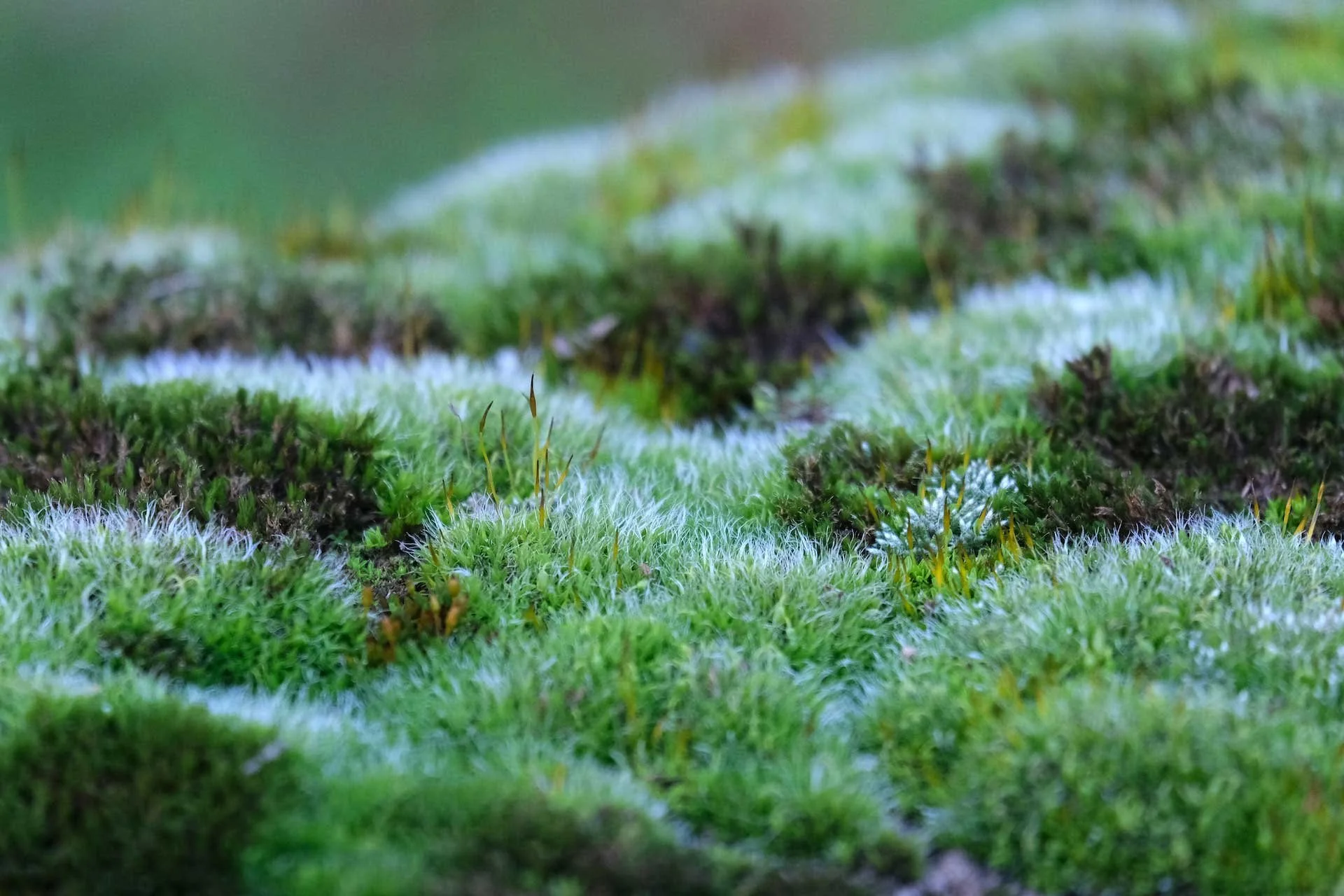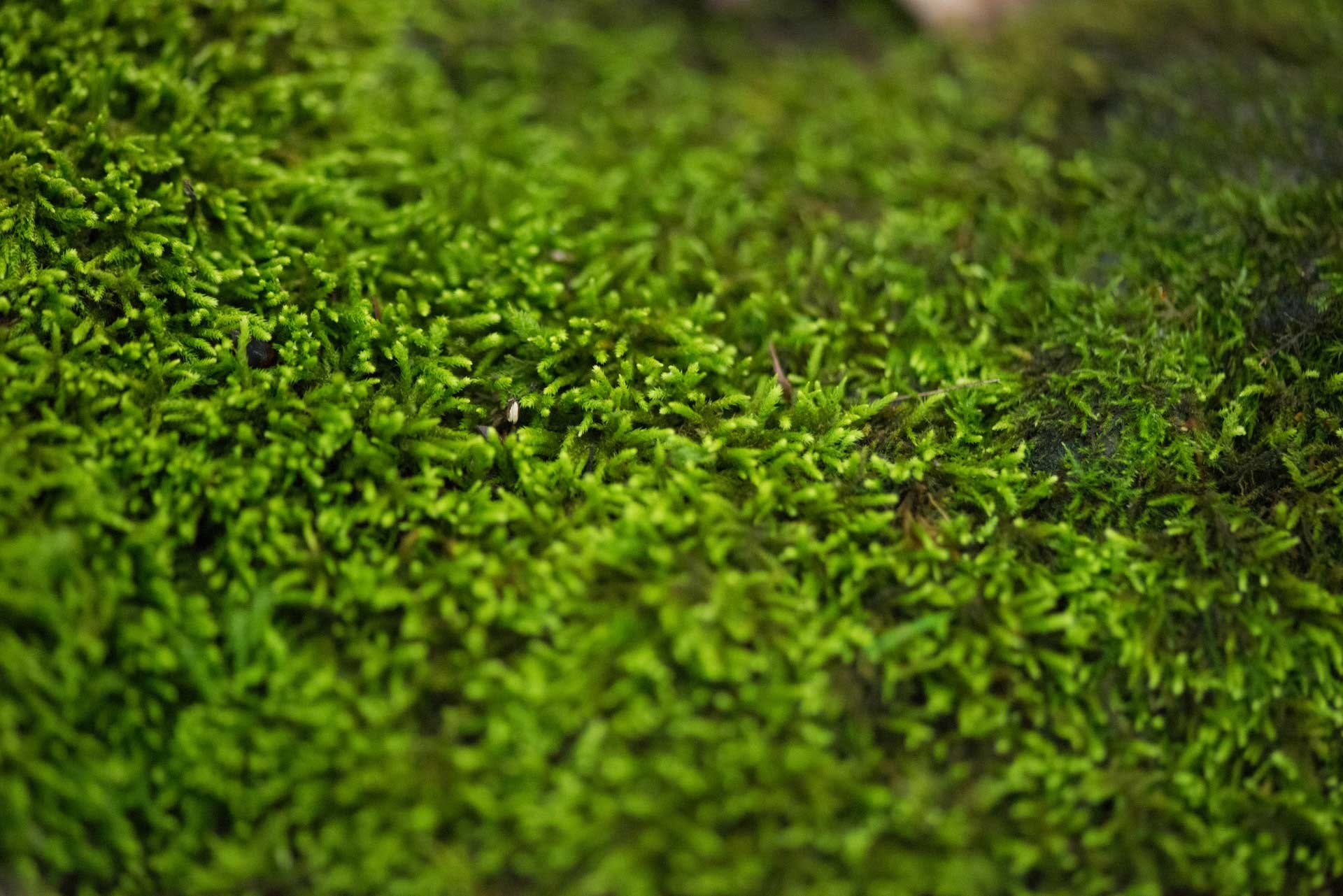The Marvels of Mosses: Their Ecological and Health Benefits
22nd July 2023
In the vast and diverse realm of flora that exists on our planet, mosses often go unnoticed, overshadowed by towering trees, vibrant flowers, and intricate ferns. However, these tiny, unassuming plants play a crucial role in maintaining the delicate balance of ecosystems and offer numerous benefits to both the environment and to human wellbeing. Mosses, often regarded as simple and primitive, are in fact, extraordinary organisms with unique attributes that deserve recognition and protection. Let's explore the wonders of mosses and the many ways they contribute to the world around us.
What are Mosses?
Mosses are small, simple, non-vascular plants belonging to the division Bryophyta. They are one of the three main groups of bryophytes, the other two being liverworts and hornworts and are found in a wide variety of habitats, including forests, wetlands, rocks, and even urban environments.
Here are some key characteristics of mosses:
They are Non-Vascular
Unlike vascular plants, such as ferns, trees, and flowering plants, mosses lack a specialised vascular system that transports water and nutrients throughout the plant. Instead, they rely on osmosis and diffusion to absorb water and nutrients directly through their tissues.
They Have Rhizoids
Mosses have thread-like structures called rhizoids that anchor the plant to the substrate (usually soil or rocks). Rhizoids do not have the same function as roots, as they don't absorb water or nutrients; rather, they help the moss attach to surfaces and aid in moisture uptake through a capillary action.
Reproduction and Sporangia
Mosses reproduce through spores rather than seeds. They have specialised structures called sporangia (produced on sporophyte – see below), that produce and release spores. When conditions are favourable, these spores germinate and grow into new moss plants.
Leaf Structure and Gametophyte
The visible part of the moss plant is called the gametophyte, which consists of leafy structures that are often densely packed together in mats or clumps. These leafy structures are one cell-layer thick and are usually arranged in a spiral pattern around the stem-like structure of the moss. The gametophyte play a significant role in absorbing water and nutrients and providing shelter for various different organisms.
Sporophyte and Sporangia
Alternating Generations
Mosses exhibit a fascinating life cycle with alternating generations of the gametophyte and the sporophyte.
The gametophyte is the first generation and produces specialised structures called gametangia, that house the male and female gametes (sperm and eggs) required for sexual reproduction. When conditions are favourable, water aids in the fertilisation process by allowing the sperm to swim to the egg, resulting in the formation of the sporophyte. The sporophyte represents the second generation and is physically dependent on the gametophyte. It typically appears as a slender stalk topped with a capsule containing spores (sporangia). As the sporophyte matures, it releases spores into the environment. These spores can then disperse and germinate, giving rise to new gametophytes, thus completing the life cycle of mosses. This alternation of generations is a unique and essential aspect of moss biology, contributing to their ecological success and significance in various ecosystems.
Environmental Adaptability
Mosses are highly adaptable to various environmental conditions. They can survive in both wet and dry habitats, and their ability to tolerate desiccation allows them to revive and grow when exposed to water again.
Environmental Indicators
Mosses can be used as bioindicators in environmental studies. Their presence or absence in specific areas can provide insights into the health and environmental conditions of the ecosystem.
You can find out more about the differences between mosses and lichens here.
Ecological and Environmental Benefits
Erosion Control
Mosses serve as one of nature's first line of defence against soil erosion. Their unique structure enables them to absorb and retain water effectively, and when heavy rains or water flow threaten to wash away soil from barren landscapes, mosses act as protective blankets, stabilising the ground and preventing erosion, as mosses are also exceptionally good at anchoring themselves to various surfaces, such as soil, as well as rocks and tree trunks. Combined with their ability to hold water and retain soil particles this can help prevent erosion, especially in areas with steep slopes or vulnerable to heavy rainfall and particularly vital in areas where deforestation or wildfires have left the soil vulnerable.In areas where erosion is a concern, planting mosses can stabilise the soil, reduce sediment runoff, and protect waterways from pollution, which is particularly important in regions affected by human activities, such as construction or intensive agriculture.
Carbon Sequestration
These unassuming plants are the unsung heroes in the fight against climate change. Mosses capture and store carbon dioxide from the atmosphere through photosynthesis, and while individual moss plants may seem insignificant in this process, the sheer abundance of mosses worldwide accumulates to a significant impact. So despite their small size, the cumulative carbon sequestration of mosses worldwide is significant and contributes to mitigating greenhouse gas emissions. Recent research published in the journal Nature reports that globally, soil mosses potentially support 6.43 Gigatonnes (6.43 billion metric tonnes) more carbon in the soil layer than do bare soils. This represents six times the annual global carbon emissions caused by changes in land use such as agriculture, global deforestation, urbanisation and mining. Protecting moss-rich ecosystems, such as peatlands and bogs, is therefore essential for maximising their carbon storage potential and conserving these areas helps combat climate change by preventing the release of stored carbon into the atmosphere.Biodiversity Support
Mosses create unique microhabitats within their compact structures. These tiny worlds provide shelter, moisture, and protection for a diverse range of microorganisms, small mammals, insects, and invertebrates which in turn support the life cycles of various creatures, contributing to overall biodiversity and ecological balance. Mosses may appear as simple green mats, but they are bustling ecosystems in their own right. Preserving our moss-rich environments ensures that these microhabitats remain intact, supporting a wide range of species and contributing to the overall diversity of the ecosystem. In this way these mossy habitats form a crucial part of the overall biodiversity of forests, wetlands, and other ecosystems.Water Purification
Clean, freshwater is becoming an increasingly scarce resource, and pollution can pose a significant threat to water quality. Mosses come to the rescue yet again, acting as natural water filters. They absorb and trap pollutants, heavy metals, and sediments, purifying water as it percolates through their dense, sponge-like structures. This unique capability of mosses helps in improving water quality in streams and ponds and maintaining healthier aquatic habitats for various organisms, including fish and amphibians.
Human Health Benefits
Air Quality Improvement
Mosses contribute to cleaner air by absorbing pollutants like nitrogen dioxide, sulphur dioxide, and particulate matter. In urban environments, where air pollution is a concern, mosses can play a role in enhancing local air quality.Stress Reduction
Spending time in moss-covered environments, such as forests or natural spaces, has been shown to have stress-reducing effects on humans. The calming green hues and serene ambiance of these places can help promote relaxation and a sense of wellbeing.Air Humidification
Mosses release moisture into the air through a process known as transpiration. This natural humidification can be beneficial, especially in dry and arid regions, as it helps maintain suitable humidity levels for human comfort and respiratory health.Medicinal Properties
Some moss species have traditional medicinal uses, especially in various Asian cultures. They have been employed for wound healing, as antiseptics, and to treat certain skin conditions.
Moss Gardening and Low-Maintenance Landscaping
Mosses' beauty lies in their simplicity. The lush green carpets they form on rocks, tree bark, and forest floors create a magical and enchanting sight. Whilst people have historically enjoyed their beauty primarily in the wild, many landscapers and gardeners are increasingly appreciating not only the aesthetic appeal, but also the benefits of incorporating mosses into gardens.
Moss gardening is gaining popularity as an eco-friendly and low-maintenance alternative to traditional lawns. Unlike grass, mosses require no mowing, fertilizers, or pesticides, reducing the environmental impact of maintaining green spaces. Moss gardens also thrive in shady and damp areas where grass may struggle, making them an excellent choice for urban environments and regions with limited water resources. Moss gardens or green roofs can also help manage stormwater runoff, reduce the urban heat island effect, and provide habitat for urban wildlife. In this way, incorporating mosses into landscaping practices can promote sustainability and reduce the need for resource-intensive maintenance.
Conservation and Preservation
Despite their ecological significance, mosses are increasingly facing threats due to habitat destruction, pollution, and climate change. Raising awareness about the importance of preserving moss-rich ecosystems is crucial for maintaining biodiversity and protecting the planet's fragile balance.
Final Thoughts
Mosses may be small and unassuming, but their significance cannot be underestimated. From their role in stabilising ecosystems and sequestering carbon to their contributions to human health and wellbeing, these ancient plants hold invaluable secrets that warrant our admiration and protection. By recognising and preserving the marvels of mosses, we can contribute to a more sustainable and healthier planet for generations to come.
If you have enjoyed this article and would like to support what we do by donating £2 or more to buy saplings, please follow the link below:





























































